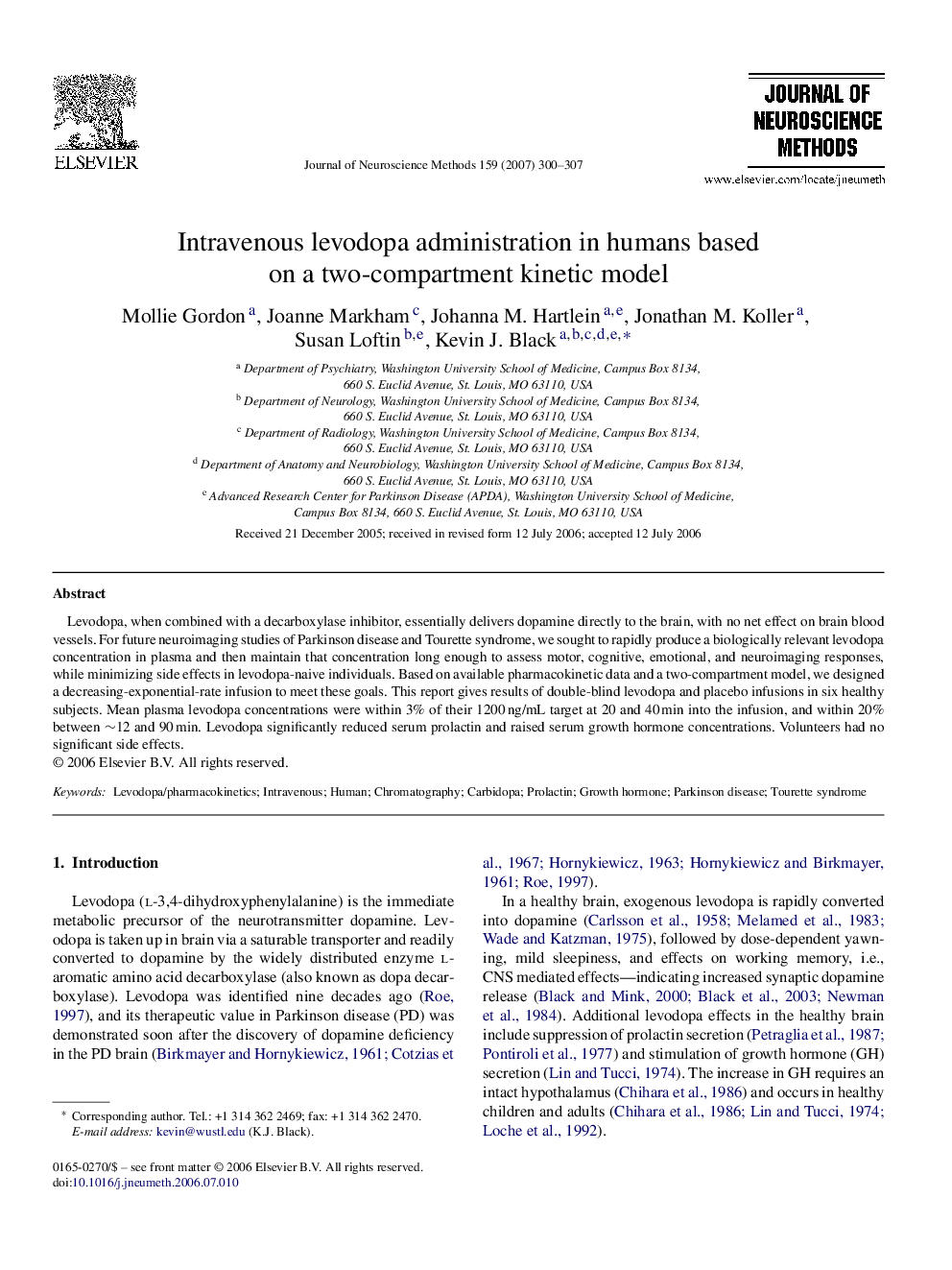| Article ID | Journal | Published Year | Pages | File Type |
|---|---|---|---|---|
| 4336896 | Journal of Neuroscience Methods | 2007 | 8 Pages |
Abstract
Levodopa, when combined with a decarboxylase inhibitor, essentially delivers dopamine directly to the brain, with no net effect on brain blood vessels. For future neuroimaging studies of Parkinson disease and Tourette syndrome, we sought to rapidly produce a biologically relevant levodopa concentration in plasma and then maintain that concentration long enough to assess motor, cognitive, emotional, and neuroimaging responses, while minimizing side effects in levodopa-naive individuals. Based on available pharmacokinetic data and a two-compartment model, we designed a decreasing-exponential-rate infusion to meet these goals. This report gives results of double-blind levodopa and placebo infusions in six healthy subjects. Mean plasma levodopa concentrations were within 3% of their 1200Â ng/mL target at 20 and 40Â min into the infusion, and within 20% between â¼12 and 90Â min. Levodopa significantly reduced serum prolactin and raised serum growth hormone concentrations. Volunteers had no significant side effects.
Keywords
Related Topics
Life Sciences
Neuroscience
Neuroscience (General)
Authors
Mollie Gordon, Joanne Markham, Johanna M. Hartlein, Jonathan M. Koller, Susan Loftin, Kevin J. Black,
